The joy of burrata
If you’re a cheese lover, then you’ve probably heard of burrata cheese. A fresh, deliciously decadent creamy cheese originating from Puglia that is taking the culinary world by storm. Delicious on top of spaghetti al pomodoro, friselle or pizza. But best enjoyed on its own, with a crack of black pepper, a sprinkle of sea salt and finished with a drizzle of peppery Puglian olive oil (and a hunk of crusty bread to mop up the soft, runny inside).
At first glance burrata may resemble mozzarella but it has a softer, creamier texture. Then you slice through to reveal its creamy interior. The idea of filling a mozzarella pouch with a cream-heavy mix of mozzarella shreds is genius.
To mark the occasion of 20 years of the Observer Food Monthly food writer Nigel Slater selected his 5 star ingredients. Foods that had a “moment” in the last 20 years as he put it.
I’m not sure I had even heard of burrata when we started OFM. Now, this quivering, milky egg of cheese has usurped even mozzarella as our go-to fresh cheese.
What a journey burrata from Puglia has gone on. From relatively unknown outside Italy, to the number 3 Best Rated Cheese in the World according to TasteAtlas, the online encyclopedia of flavors and world atlas of traditional dishes, local ingredients, and authentic restaurants.
Deliciously decadent
Burrata is made from cow’s milk. Delicate and less fatty than sheep’s milk, perfect for burrata’s soft, delicate texture and rich, creamy flavor. What makes it truly unique is the way it is made. The cheese is formed into a pouch and filled with creamy curd and cream, giving it an almost liquid center. The pouch is then tied together and served fresh, usually on the same day it’s made. It should be eaten within 24 hours of being made. The creamy filling is absorbed the longer you leave the burrata, until it more closely resembles mozzarella.
Burrata – a global cheese
You can find burrata around the world, predominantly in high-end food stores, delicatessen and restaurants. According to a report by the Italian Association of Dairy Industry (Assolatte), Italy produced about 123,000 tons of burrata cheese in 2020. The US imported about 4,500 tons, with a value of around $47 million (Italian Trade Agency). Local producers regularly export their produce to Germany, Hong Kong and Tokyo.
Italian immigrants exported the recipe around the world, and today burrata is produced in places from Argentina to Zanesville, Ohio.
Although burrata has become a global cheese its history dates back to the 1920s, to a farmhouse in the outskirts of the city of Andria, close to Castel del Monte, called Masseria Bianchini.
There is no written record of its creation. The first mention of burrata is in the Guida Gastronomica D’Italia guide to Italian regional recipes) published in 1931. Listed as “un prodotto tipico andrino” (a typical local product of Andria). In 1956 an agricultural magazine called “La Terra e il Cielo,” published an article about cheese production in the region of Puglia. The article described burrata cheese as a relatively new type of cheese that had only been produced in the region “for a few decades”.
According to local historian Riccardo Campanile who held numerous interviews with Andria’s elderly population, it was local cheesemaker Lorenzo Bianchino Chieppa who invented burrata. Other Andria burrata makers dispute the claim.
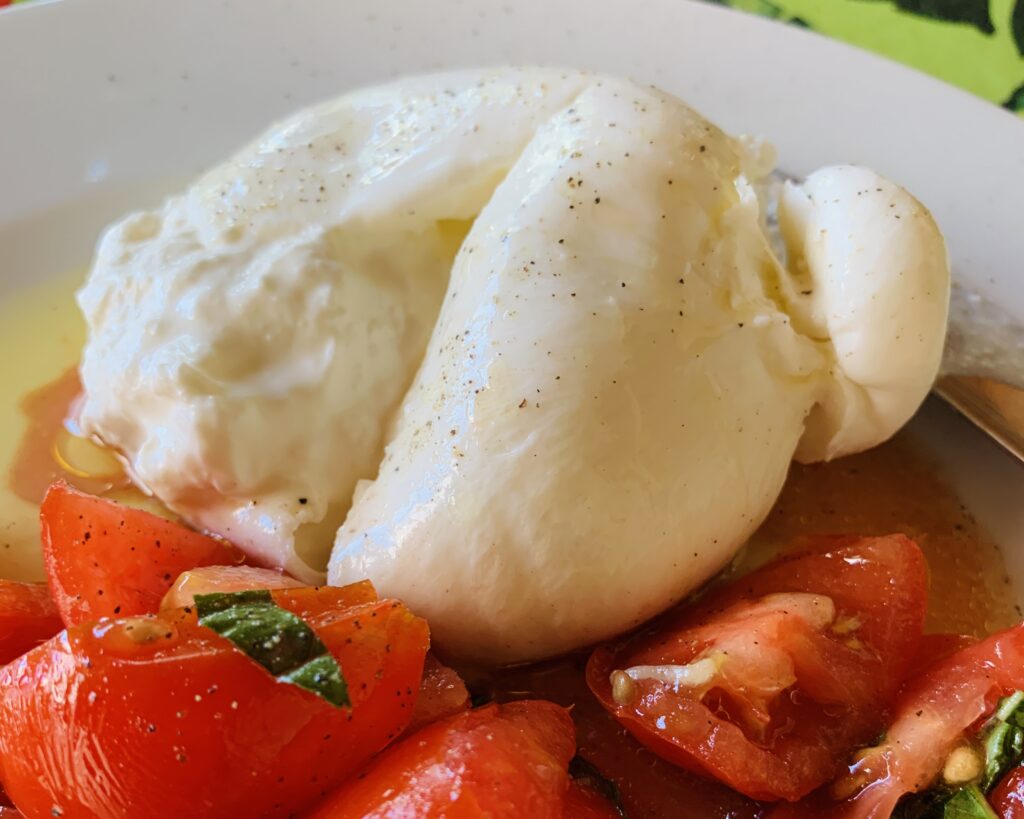
Born out of ingenuity
Typical of Puglia’s cucina povera tradition, using seasonal and local produce, with little going to waste, the cheese was created as a way of using up any leftover curd from the cheese making process. The cream came from the dense layer formed on top of the morning milking. Left over pieces of stretched curd mozzarella were stripped with fingers, mixed inside the cream and used as filling for the burrata.
Pouches to hold the filling were made by blowing balloon like into soft, warm mozzarella. Once filled the pouch was pinched shut and tied closed. To keep the outer layer of the cheese moist and fresh in the heat, the balls of cheese were wrapped in leaves. The cream would act as a preservative, preventing the mozzarella strips from becoming acidic. Later the freshly made burrata would be dipped in brine to toughen the outer layer, before covering it in the leaves.
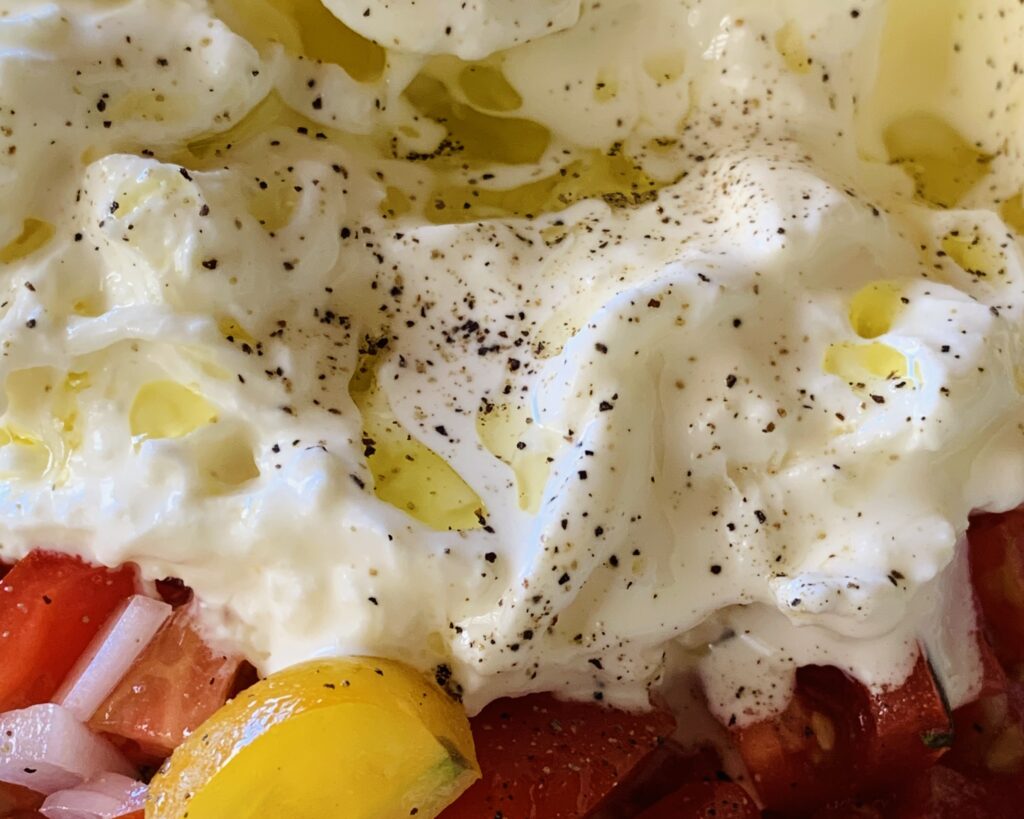
Burrata di Andria IGP
In 2018, to protect the authentic burrata-making process from imitation, a number of local dairies joined together to create an Indication of Geographic Protection (IGP), naming it Burrata di Andria IGP. Any Puglian dairy that complies with the consortium’s regulations can join provided that production is in Puglia following a precise recipe and method.
Burrata cheese is everywhere in Puglia. You can enjoy it in traditional dishes like pasta or pizza, or on its own with some crusty bread and a glass of wine. There are even special burrata festivals held in the region where you can sample different varieties and learn more about the cheese-making process.
One of the best places to try burrata in Puglia is the city of Andria, known for its high-quality cheese production. Here, you can visit local farms and dairies to see the cheese-making process up close and sample some of the freshest burrata you’ll ever taste.
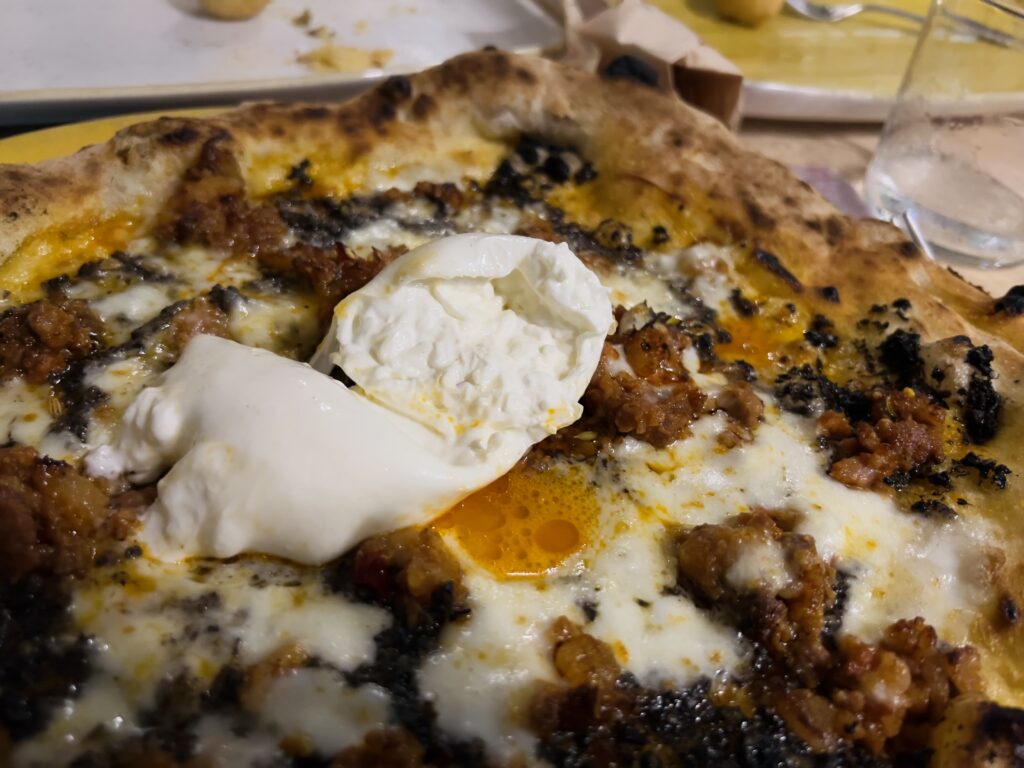
Burrata cheese from Puglia is a must-try for anyone who loves cheese. Its delicate texture, rich flavor, and unique preparation make it a truly special cheese that’s worth seeking out. A taste of Puglia that you won’t soon forget.
More | Eat Puglia – on our region’s food and drink
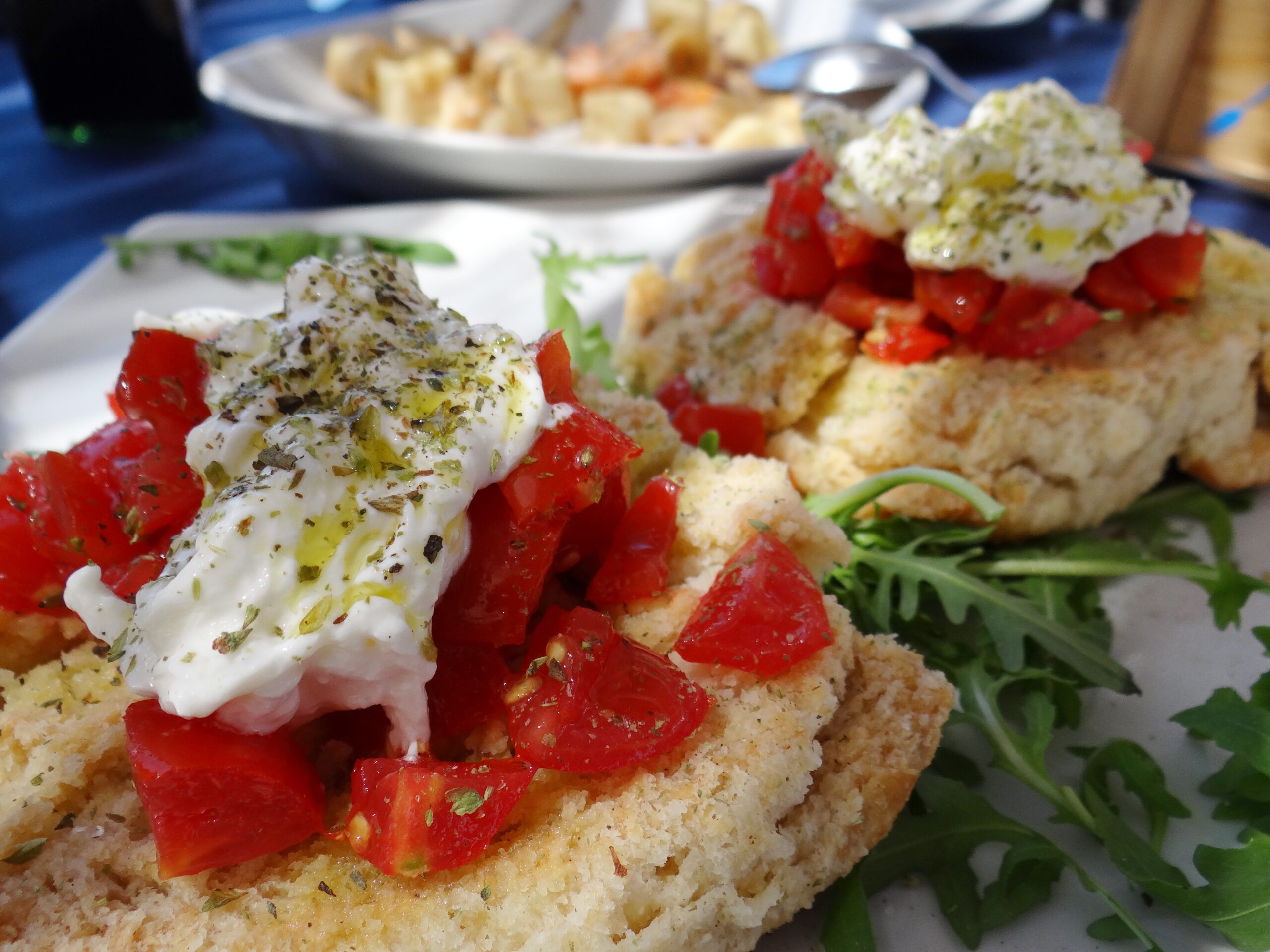
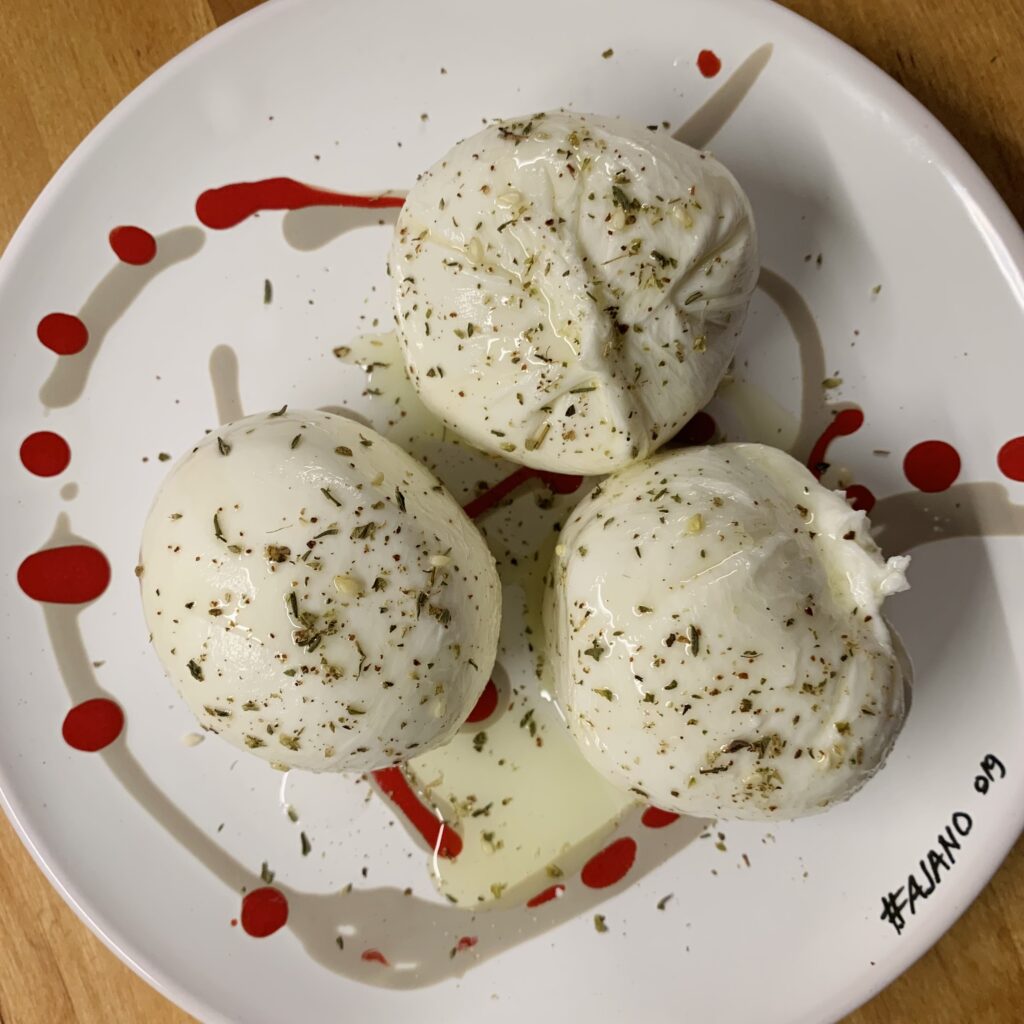
Foodies united. Great post. Thanks for sharing this one with us 🤩🤩🤩
Great post! I love burrata but I’ve probably not had it as good as in Puglia! I guess I better come visit.
Pingback: Puglia part 2: Masserie, the farmhouse estates – The Minnesota Noices
Looks like a good time was had by all! Glad to hear you had such a wonderful time visiting Puglia. #PugliaPerfect